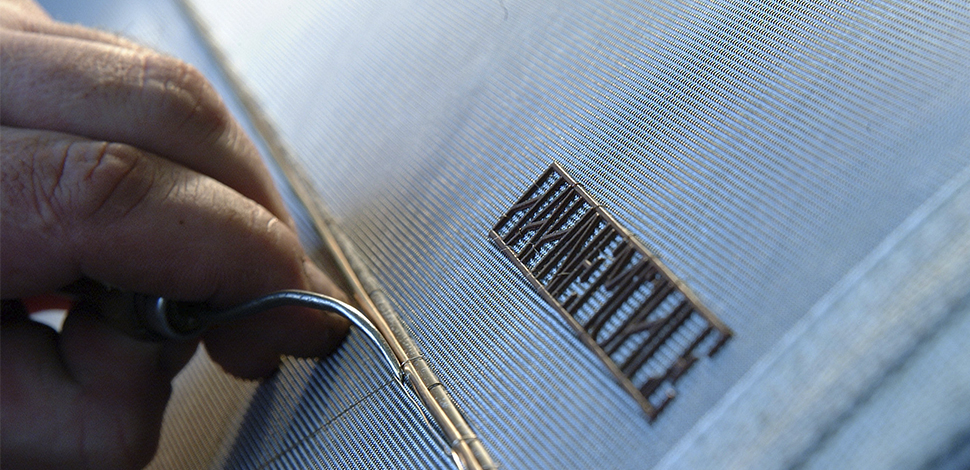Paper production
Clean water, natural fibres, first-rate expertise in the art of paper production and absolute commitment to quality has been the foundation of our success for more than 400 years.
Sustainability also plays a key role at our production site as Hahnemühle is located in a nature reserve. As such, environmentally friendly paper production is a high priority. Using precious resources such as water, fibres and energy sparingly and responsibly is a matter of course for us.
Water
The water we use to produce our high-quality FineArt paper comes straight from the source and is characterised by its particularly high level of purity, meaning it doesn’t need to be chemically treated. Even at the end of the production cycle, the wastewater has been not contaminated with pollutants and is returned to the river as high-quality water. As we are based in a a nature reserve our production processes meet the most stringent of environmental requirements. This has also been confirmed by a study conducted by the Paper Technology Foundation in Munich and certifies that we use water responsibly and most importantly, sparingly.
Fibres
Our product portfolio comprises more than 500 different kinds of artist paper, filter paper and technical paper for industry and research. To ensure we maintain our paper’s high level of purity, we only use primary fibres. We use lignin-free cellulose sourced from deciduous and coniferous trees that grow in sustainably managed forests. The majority of our suppliers, who are based all over the world, are certified – for example, in accordance with the guidelines stipulated by the Forest Stewardship Council (FSC) or the Programme for the Endorsement of Forest Certification Schemes (PEFC). It is also very important to us that our fibres are not treated with any free chlorine. The linter types also play an essential role in our 100% cotton paper. Linters are fine fibres that cling to the seed of the cotton plant and occur as a by-product of the textile and oil industries. We are also seeking fast-growing, resource-friendly cellulose alternatives, researching them and developing new types of paper from them, e.g. from bamboo. We always ensure that the areas used to grow these raw materials have not been created by clearing tropical rainforests.
Energy
Paper production is an energy-intensive process. We generate our energy using electricity and natural gas. For many years now, we have been generating all the energy we need exclusively from renewable sources, such as wind, water and solar energy, thereby avoiding more than 3,000 tonnes of CO2 emissions every year. We’re proud of this figure, but we’re always looking to reduce our emissions further. We use natural gas to heat the cylinders in the paper machines, which dry the paper during the production process. Thanks to our waste-heat recovery system, the emissions from our furnace are below the legal limits, by more than 40%.
Recycling
A key element of sustainable resource management is recycling. Any production waste or scrap materials are returned to the production cycle and, if that isn’t possible, they are handed over to other waste processors. We then prioritise secondary raw materials – that is, recycled materials – as long as they can be used in our products without compromising their quality. Good examples of these materials are cardboard boxes, roll tubes and the back pages for our pads.

